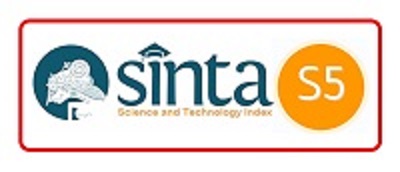The Effect of Budget Participation and Information Asymmetry on Budgetary Slack with Dark Triad Character as a Moderating Variable in Hospitals in East Kalimantan
DOI:
https://doi.org/10.29240/disclosure.v5i1.12804Keywords:
budget participation, information asymmetry, dark triad characteristics, budgetary slackAbstract
This study aims to analyze the influence of budget participation and information asymmetry on budgetary slack, with Dark Triad characteristics as a moderating variable. The study was conducted in 54 hospitals in East Kalimantan, with 27 hospitals responding to the questionnaire. This research is included in the category of correlational research. The study sample consisted of 69 respondents, selected using the probability sampling method. Data was collected through the distribution of questionnaires via WhatsApp links, with a response period of two months. Data analysis was performed using the Structural Equation Modeling (SEM) - Partial Least Square (PLS) method, supported by Smart PLS software. The results show that budget participation has a positive and significant effect on budgetary slack. Additionally, information asymmetry also has a positive and significant effect on budgetary slack, meaning that the higher the information asymmetry, the greater the tendency for budgetary slack to occur. Furthermore, Dark Triad characteristics were found to moderate the relationship between budget participation and budgetary slack, as well as the relationship between information asymmetry and budgetary slack. In other words, individuals with Dark Triad traits tend to amplify the effects of budget participation and information asymmetry on the creation of budgetary slack. These findings emphasize the importance of strict supervision and effective budget control systems to minimize the negative impact of budgetary slack, particularly in organizational environments such as hospitals.
Downloads
References
Chong, V. K., & Khudzir, N. F. (2018). The effect of mutual monitoring and need for achievement on budgetary slack in a team-based environment. Advances in Accounting Behavioral Research, 21, 1–19. https://doi.org/10.1108/S1475-148820180000021001
Daumoser, C., Hirsch, B., & Sohn, M. (2018). Honesty in budgeting: a review of morality and control aspects in the budgetary slack literature. Journal of Management Control, 29(2), 115–159. https://doi.org/10.1007/s00187-018-0267-z
Fanani, Z., & Saudale, G. E. K. (2019). Influence of Information Asymmetry and Self-Efficacy on Budgetary Slack: An Experimental Study. Jurnal Akuntansi Dan Keuangan, 20(2), 62–72. https://doi.org/10.9744/jak.20.2.62-72
Faria, J. A. de, & Silva, S. M. G. da. (2013). The Effects of Information Asymmetry on Budget Slack: An Experimental Research. African Journal of Business Management, Vol. 7(13), 1086–1099. https://doi.org/10.5897/AJBM2013.1641
Fauzan, S.STP., M. S. (2020). Budgetary Slack pada Anggaran Sektor Publik.
Feist, J., & Feist, G. J. (2010). Teori Kepribadian. Salemba Humanika.
Hariyani, D. S. (2018). Akuntansi Manajemen Teori dan Aplikasi. In Aditya Media Publishing.
Mahatmyo, A. (2014). Sistem Informasi Akuntansi Suatu Pengantar. In Kementerian Keuangan.
Mahmudi. (2011). Akuntansi Sektor Publik. (Cetakan 1). Yogyakarta: UII Press.
Ngo, Q. H., Huynh, T. N., & Doan, T. N. N. (2017a). A Study on Managers’ Creation of Budgetary Slack in Emerging Economies: The Case of Vietnam. Asian Journal of Accounting Research, 2(2), 15–28. https://doi.org/10.1108/AJAR-2017-02-02-B003
Ngo, Q. H., Huynh, T. N., & Doan, T. N. N. (2017b). A Study on Managers’ Creation of Budgetary Slack in Emerging Economies: The Case of Vietnam. Asian Journal of Accounting Research, 2(2), 15–28. https://doi.org/10.1108/AJAR-2017-02-02-B003
Nottar, D. I. da S., Schiavo, P. dos S., Vesco, D. G. D., & Santos, C. A. dos. (2022). The effect of the dark triad traits on the relationship between obedience pressure and budgetary slack,. Revista Contabilidade & Finanças, 33(90), 1–15. https://doi.org/10.1590/1808-057x20211455.en
Paulhus, D. L., & Williams, K. M. (2002). The Dark Triad of Personality: Narcissism, Machiavellianism, and Psychopathy in Everyday Life. Journal of Research in Personality, 36(6), 556–563.
Rominho, Niar, H., & Sipayung, P. (2019). Sistem Informasi Bisnis. In Journal of Chemical Information and Modeling.
Sampouw, C. E. (2018a). Experimental Study: the Influence of Pay Scheme and Personal Value To Budgetary Slack. Jurnal Aplikasi Manajemen, 16(4), 614–621. https://doi.org/10.21776/ub.jam.2018.016.04.07
Sampouw, C. E. (2018b). Experimental Study: the Influence of Pay Scheme and Personal Value To Budgetary Slack. Jurnal Aplikasi Manajemen, 16(4), 614–621. https://doi.org/10.21776/ub.jam.2018.016.04.07
Sugiyono. (2017). Metodologi Penelitian Bisnis: Pendekatan Kuantitatif, Kualitatif, Kombinasi, dan R&D. In Alfabeta.
Suhartini, D., Riadi, E., & Sari, R. P. (2017). Model Budgetary Slack Dan Kinerja Manajerial: Berperspektif Gender. Jurnal Manajemen, 19(3), 408. https://doi.org/10.24912/jm.v19i3.33
Downloads
Published
How to Cite
Issue
Section
Citation Check
License
Copyright (c) 2025 Setia Rahmi Yasmi, Yana Ulfah, Hariman Bone

This work is licensed under a Creative Commons Attribution-ShareAlike 4.0 International License.
Authors who publish with this journal agree to the following terms:
- Authors retain copyright and grant the journal right of first publication with the work simultaneously licensed under a Creative Commons Attribution License (CC BY-NC-SA 4.0) that allows others to share the work with an acknowledgment of the work's authorship and initial publication in this journal.
- Authors are able to enter into separate, additional contractual arrangements for the non-exclusive distribution of the journal's published version of the work (e.g., post it to an institutional repository or publish it in a book), with an acknowledgment of its initial publication in this journal.
- Authors are permitted and encouraged to post their work online (e.g., in institutional repositories or on their website) prior to and during the submission process, as it can lead to productive exchanges, as well as earlier and greater citation of published work (See The Effect of Open Access).














